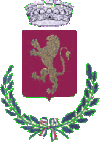Bomarzo
| Bomarzo | ||
|---|---|---|
| Comune | ||
| Comune di Bomarzo | ||
 |
||
|
||
| Location of Bomarzo in Italy | ||
| Coordinates: 42°28′N 12°14′E / 42.467°N 12.233°ECoordinates: 42°28′N 12°14′E / 42.467°N 12.233°E | ||
| Country | Italy | |
| Region | Lazio | |
| Province / Metropolitan city | Viterbo (VT) | |
| Frazioni | Mugnano in Teverina | |
| Government | ||
| • Mayor | Roberto Furano | |
| Area | ||
| • Total | 39.89 km2 (15.40 sq mi) | |
| Elevation | 263 m (863 ft) | |
| Population (2008) | ||
| • Total | 1,791 | |
| • Density | 45/km2 (120/sq mi) | |
| Demonym(s) | Bomarzesi | |
| Time zone | CET (UTC+1) | |
| • Summer (DST) | CEST (UTC+2) | |
| Postal code | 01020 | |
| Dialing code | 0761 | |
| Patron saint | St. Anselm | |
| Saint day | April 24 | |
| Website | Official website | |
Bomarzo is a town and comune of the province of Viterbo (Lazio, central Italy), in the lower valley of the Tiber. It is located 14.5 kilometres (9.0 mi) east-northeast of Viterbo and 68 kilometres (42 mi) north-northwest of Rome.
The city's current name is a derivation of Polymartium, first mentioned in the Historia Langobardorum by Paulus Diaconus. The etymology "polis martium", city of Mars, suggests a Roman origin. However, archeological evidence for a Roman city has not been found so far.
It was a historical fiefdom of the Orsini family, whose castle is at the edge of the densely built town, until it was sold to Ippolito Lante Montefeltro della Rovere in 1645. Lante was elevated to the title of Duke of Bomarzo.
A bishopric was established around 400 AD, which in 700 gained territory from the suppressed Diocese of Ferento.
In 1015, it was suppressed and its territory transferred to the Diocese of Bagnoregio.
The bishopric was nominally restored as a titular see in 1969.
It has had the following incumbents, of either lowest (episcopal) or archiepiscopal (intermediary) rank:
Bomarzo's main attraction is a garden, usually referred to as the Bosco Sacro (Sacred grove) or, locally, Bosco dei Mostri ("Monsters' Grove"), named after the many larger-than-life sculptures, some sculpted in the bedrock, which populate this predominantly barren landscape.
It is the work of Pier Francesco Orsini, called Vicino (1528–1588), a condottiero or mercenary and a patron of the arts. He was greatly devoted to his wife Giulia Farnese, daughter of Galeazzo Farnese, Duke of Latera, (not to be confused with Giulia Farnese) and when she died, he created the gardens. The design has been attributed to Pirro Ligorio, a well known architect and antiquarian of the time.
...
Wikipedia


